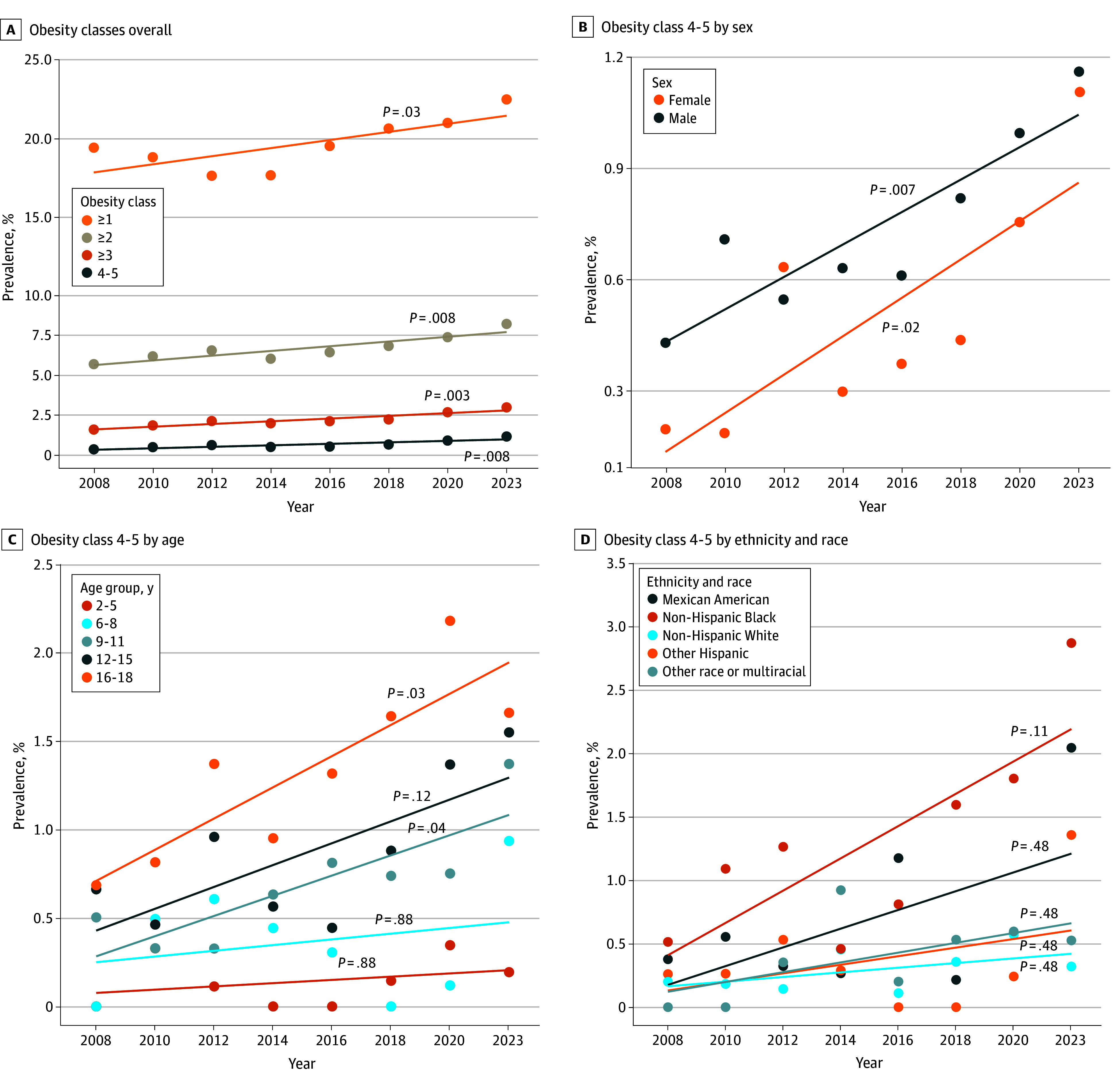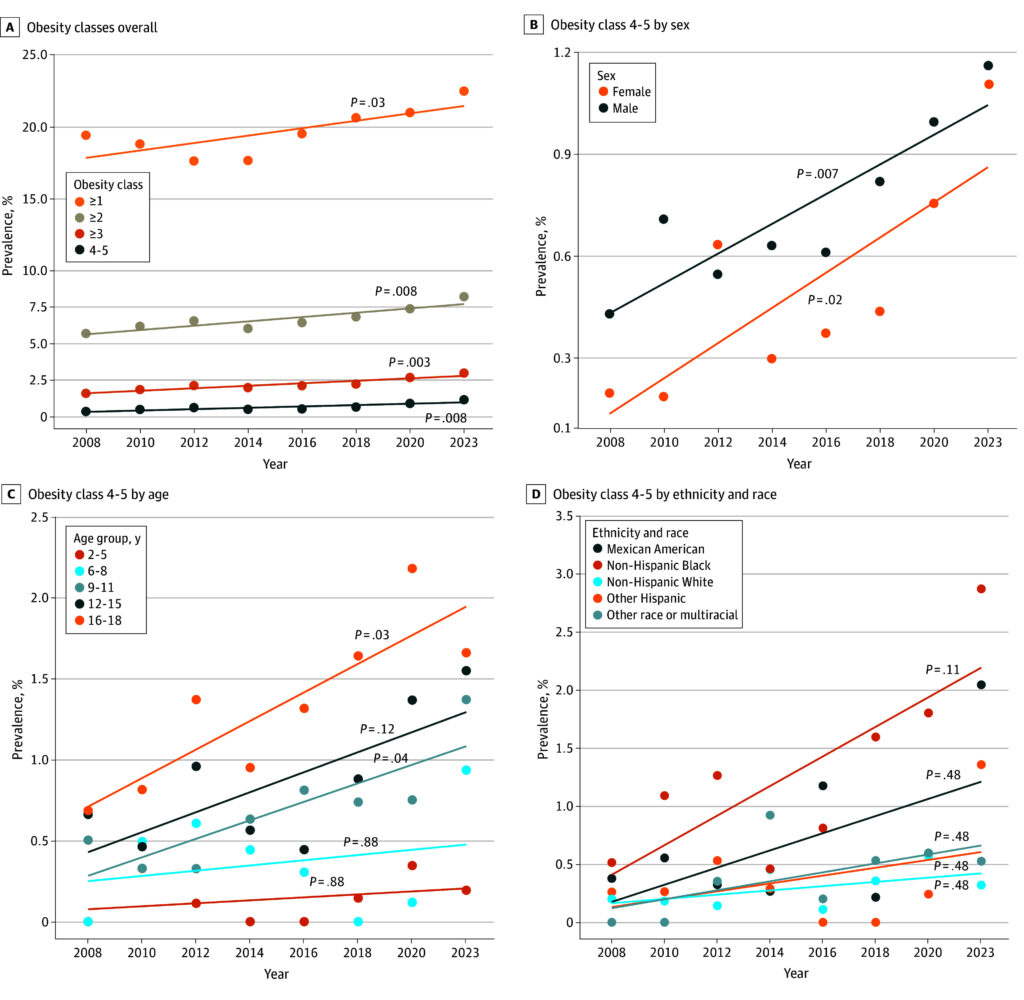Introduction
The rise of childhood obesity represents a critical public health challenge. Recent research published in JAMA Network Open investigates trends in pediatric obesity within the U.S., uncovering alarming associations between severe obesity and increased risks of metabolic and cardiovascular complications. These findings underscore the urgency of addressing this pressing issue through effective interventions and policies.
Pediatric Obesity and Associated Health Conditions
Childhood obesity has been linked to a range of serious health concerns. The World Health Organization reports a significant global increase in childhood obesity since 1990, with a 2022 survey estimating that over 160 million children worldwide are affected. Beyond the physical implications, obesity in children is strongly associated with metabolic disorders such as type 2 diabetes, dyslipidemia, metabolic dysfunction-associated steatotic liver disease (MASLD), and hypertension.
In the U.S., pediatric obesity is defined as a body mass index (BMI) at or above the 95th percentile for age and sex. Severe obesity is further categorized into classes based on BMI percentages above this threshold. Despite extensive research on childhood obesity’s adverse effects, few studies delve into the impact of obesity severity on specific health comorbidities.
About the Study
The study introduces additional classifications for extreme obesity—classes 4 and 5—representing BMI levels 160% or more above the 95th percentile. Although these categories encompass a small proportion of children, their prevalence increased by 253% between 2008 and 2023. Researchers utilized data from the National Health and Nutrition Examination Survey (NHANES), a biennial, nationally representative survey that assesses the health and nutritional status of the U.S. population.
Participants underwent physical examinations, provided biological samples, and shared health behavior and demographic information. The study employed liver imaging to evaluate metabolic dysfunction, defining MASLD through hepatic steatosis alongside cardiometabolic criteria. Insulin resistance was measured using the Homeostatic Model Assessment for Insulin Resistance (HOMA-IR).
Key Findings
Analysis of the study cohort, which comprised nearly equal numbers of male and female participants with a median age of 10 years, revealed several important trends:
– Rising Obesity Rates: The prevalence of pediatric obesity increased from 19.46% in 2008 to 22.52% in 2023. Extreme obesity (classes 4 and 5) rose significantly, albeit remaining a small fraction of cases.
– Demographic Disparities: Older adolescents, males, and non-Hispanic Black and Mexican American youths showed disproportionately higher rates of extreme obesity.
– Health Risks: Severe obesity was strongly associated with metabolic complications, including MASLD, insulin resistance, liver dysfunction, and metabolic syndrome. Children in obesity classes 4 and 5 exhibited notably higher prevalence rates of these conditions compared to those with milder obesity.

Figure 1. Prevalence of Pediatric Obesity From 2008 to 2023 Among 25 847 Individuals.
Implications and Recommendations
The study highlights the urgent need for public health measures to counter the rising prevalence of severe pediatric obesity. Targeted interventions include equitable access to emerging anti-obesity treatments, prioritization of high-risk populations, and strategies to address socioeconomic and racial disparities. Preventive measures, such as promoting healthy lifestyles and early detection of at-risk individuals, are essential.
Conclusion
The escalating prevalence of extreme childhood obesity in the U.S. calls for immediate action to mitigate its impact on public health. By implementing focused interventions and addressing systemic disparities, stakeholders can work towards reducing the burden of obesity-related diseases and improving the health outcomes of affected youths.
- Münte E, et al. (2025) Prevalence of Extremely Severe Obesity and Metabolic Dysfunction Among US Children and Adolescents. JAMA Network Open. 8(7):e2521170. doi:10.1001/jamanetworkopen.2025.21170 IF: 9.7 Q1


